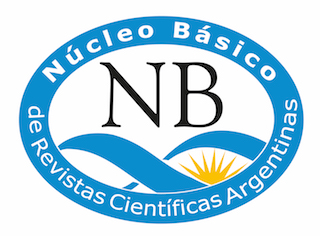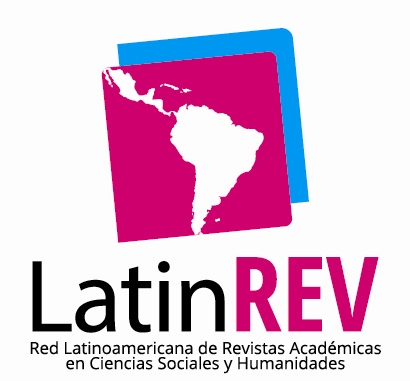Notas jurídicas sobre la parábola sogdia del Perforador de Perlas
Resumen
Notas jurídicas sobre la situación del trabajador en la parábola sogdia del Perforador de perlas, una redacción maniquea probablemente traducida en Asia Central del cuento conocido por el prólogo de Borzūya en Kalīlah wa Dimnah, y el discurso maniqueo anti-zoroastriano.
Citas
‘Azzām, ‘Abd-al-wahhāb (1941), كتاب كليلة و دمنة, El Cairo: al-Ma‘ārif.
Azarnouche, S. (2013), Husraw ī kawādān ud rēdag-ē. Kosrow fils de Kawād et un page, París: Association pour l’avancement des études iraniennes.
Bailey, H. W. (1967), Prolexis to the Book of Zambasta, Cambridge: Cambridge University Press.
Bailey, H. W. (1979), Dictionary of Khotan Saka, Cambridge: Cambridge University Press.
BeDuhn, J. (2000), The Manichaean Body in Discipline and Ritual, Baltimore: The Johns Hopkins University Press.
BeDuhn, J. (2015), “Parallels between Coptic and Iranian Kephalaia: Goundesh and the King of Turan”, en Gardner, I. et al. (eds), Mani at the Court of the Persian Kings. Studies on the Chester Beatty Kephalaia Codex, Leiden: Brill, pp. 52-74.
Benkato, A. (2017). Āzandnāmē. An Edition and Literary-Critical Study of the Manichaean Sogdian Parable-Book, Wiesbaden: Reichert Verlag.
Bickell, G. (1876), Kalilag und Damnag. Alte syrische Übersetzung des indischen Fürtstenspiegels. Mit einem Einleitung von Theodor Benfey, Leipzig: Brockhaus.
De Blois, F. (1990), Burzōy’s Voyage to India and the Origin of the Book Kalīlah wa Dimnah, Londres: Royal Asiatic Society.
Bosworth, C. E. (1991), The History of al-Ṭabarī (Ta’rīkh al-rusul wa’l mulūk). Volume XXXIII: Storm and Stress along the Northern Frontiers of the ‘Abbāsid Caliphate, Nueva York: State University of New York Press.
Boyce, M. (1957), “The Parthian “Gōsān” and the Iranian Minstrel Tradition”, Journal of the Royal Asiatic Society 1957, 1-2, pp. 10-45.
Boyce, M. (1960), A Catalogue of the Fragments in Manichaean Script in the German Turfan Collection, Berlín: Akademie-Verlag.
Bryder, P. (1988), “...Where the faint traces of Maichaeism disappear”, Altorientalische Forschungen 15.1, pp. 207-208.
Cheiko, L. (1905), La version arabe de Kalîlah et Dimnah d'après le plus ancien manuscript daté, Beirut: Imprimerie catholique.
Colditz, I. (2000), Zur Sozialterminolgie der iranischen Manichäer. Ein semantische Analyse im Vergleich zu den nichtmanicäischen iranischen Quellen, Wiesbaden: Harrassowitz Verlag.
Colditz, I. (2009), “Manichaean Time-Management: Laymen between religious and secular Duties”, en BeDuhn, J. (ed.), New Light on Manichaeism, Leiden: Brill, pp. 73-100.
Comparetti, M. (2012), “Classical Elements in Sogdian Art: Fables represented in the Mural Paintings of Penjikent”, Iranica Antiqua 17 (2012), pp. 303-316.
Corcoran, S. (2011), “Observation on the Sasanian Law-Book in the Light of Roman Legal Writing”, en Rio, A. (ed.), Law, Custom, and Justice in Late Antiquity and the Early Middle Ages: Proceedings of the 2008 Byzantine Colloquium, Londres: Centre for Hellenic Studies, pp. 73-113.
Daryaee, T. (2007), “The Middle Persian Text Sūr ī saxwan and the Late Sasanian Court”, en Gyselen, R. (ed.), Des Indo-Grecs aux Sassanides: données pour l’histoire et la géographie historique (Res Orientales XVII), Bures-sur-Yvette: Le Groupe pour l'Étude de la Civilisation du Moyen-Orient, pp. 65-72.
Daryaee, T. (2009), Sasanian Persia. The Rise and Fall of an Empire, Londres: I. B. Tauris.
Döhla, H.-J. (2008), El Libro de Calila e Dimna (1215): edición nueva de los dos manuscritos castellanos, con una introducción intercultural y un análisis lexicográfico árabe-español, Tesis de doctorado, Zúrich.
Dresden, M. (1983), “Sogdian Language and Literature”, en E. Yarshater (ed.), Cambridge History of Iran, Vol. III, 2, Cambridge: Cambridge University Press, 1983, pp. 1216-1229.
Durkin, D. (2004), Dictionary of Manichaean Middle Persian and Parthian, Turnhout: Brepols.
Durkin, D. – E. Morano (2010), Mani’s Psalm. Middle Persian, Parthian and Sogdian Texts in the Turfan Collection, Turnhout: Brepols.
Gagos, T. – P. van Minnen (1994), Setting a Dispute. Toward a Legal Anthropology of Late Antique Egypt, Michigan: The University of Michigan Press.
Galmés de Fuentes, A. (1996), Influencias sintácticas y estilísticas del árabe en la prosa medieval castellana, Madrid: Gredos.
Gharib, B. (1995), Sogdian Dictionary, Teheran: Farhangan Publications.
Guidi, I. (1873), Studi sul testo arabo del Libro di Calila e Dimna, Roma: Librería Spithöver.
Hamilton, J. R. (1971), Le Conte bouddhique du bon et du mauvais prince en version ouïgoure, manuscrits ouïgours de Touen-Houang, París: Klincksieck.
Henning, W. B. (1937), Ein manichäisches Bet- und Beichtbuch, Berlín: Verlag der Akademie der Wissenschaften.
Henning, W. B. (1940), Sogdica, Londres: James G. Forlong Fund.
Henning, W. B. (1942), “Mani’s Last Journey”, Bulletin of the School of Oriental and African Studies 10.4, pp. 941-953.
Henning, W. B. (1945), “Sogdian Tales”, Bulletin of the School of Oriental and African Studies 11.3, pp. 465-487.
Henning, W. B. (1946), “The Sogdian Texts of Paris”, Bulletin of the School of Oriental and African Studies 11.4, pp. 713-740.
Henning, W. B. (1958), “Mitteliranisch”, en Handbuch der Orientalistik. Erste Ableitung. Vierter Band. Iranistik. Erster Abschnitt. Linguistik, Leiden: Brill, pp. 20-130.
Hickmann, H. (1947), Terminologie arabe des instruments de musique, El Cairo: s/d.
Ḥosayn-ʿAlī Mallāḥ (1990), “Čang”, Encyclopaedia Iranica IV.7, pp. 758-759.
Jongeward, D. – J. Cribb (2015), Kushan, Kushano-Sasanian and Kidarite Coins. A Catalogue of Coins from the American Numismatic Society, Nueva York: The American Numismatic Society.
Keith-Falconer, I. G. N. (1885), Kalīlah and Dimnah or the Fables of Bidpai, Cambridge: Cambridge University Press.
Khānlāri, P. N. - M. Rowshan (1991), eds., Muḥammad b. ‘Abdullāh al Bukhārī, Dāstān-hā-e Bidpāy, Tehran, 1369 (=1991, reimp. de la 1ra ed., 1361 = 1983).
Kósa, G. (2015), “Two Manichaean Judgment-Scenes: MIK III 4959 V and the Yamato Bunkankan Sandōzu Painting”, en Richter, S. G. et al. (eds.), Mani in Dublin, Leiden: Brill.
Lane, E. W. (1874), An Arabic-English Lexicon, Book I. – Part 5, Londres: Williams and Norgate.
Lawergren, B. (2009), “Music History. I. Pre-Islamic Iran. Music in Iranian Lands, History”, Encyclopædia Iranica, edición en línea, 2016.
Lawergren, B. (2003), “Harp”, Encyclopaedia Iranica XII.1, pp. 7-13.
Li Qiang (2015), “Roman Coins discovered in China and their Research”, Eirene 51, pp. 279-299.
Lin Ying (2006), Tángdài Fúlín Cóngshuō 唐代拂菻丛说, Pekín: Zhōnghuáshūjú.
van Lindt, P. (1992), The Names of Manichaean Mythological Figures. A Comparative Study in Terminology on the Coptic Sources, Wiesbaden: Harrassowitz.
Livshits, V. A. (2015), Sogdian Epigraphy of Central Asia and Semirech’e, ed. Nicholas Sims-Williams, Londres: School of Oriental and African Studies.
Mackenzie, N. (1971), A Concise Pahlavi Dictionary, Londres: Oxford University Press.
Marshak, B. (2002), Legends, Tales, and Fables in the Art of Sogdiana, Nueva York: Bibliotheca Persica Press.
Marshak, B. (2004), “The Murals of Sogdiana in Comparison with the Turfan Texts”, en Durkin, D. et al. (eds.), Turfan Revisited. The First Century of Research into the Arts and Cultures of the Silk Road, Berlín: Reimer.
Marquart, J. (1898), “Historische Glossen zu den alttürkischen Inschriften”, Wiener Zeitschrift für die Kunde des Morgenlandes 12, pp. 157-200.
Marshak, B. (2004), “The Murals of Sogdiana in Comparison with the Turfan Texts”, en Durkin, D. et al. (eds.), Turfan Revisited. The First Century of Research into the Arts and Cultures of the Silk Road, Berlín: Reimer.
Melikian-Chivarni, A. S. (1992), “The Iranian Bazm in Early Persian Sources”, en Gyselen, R. (ed.), Banquets d’Orient (Res Orientales IV), Bures-sur-Yvette: Le Groupe pour l'Étude de la Civilisation du Moyen-Orient, pp. 95-120.
Moazami, M. (2014), “Ḵusraw ī Kawādān ud rēdak-ēw”, Encyclopædia Iranica, edición en línea, 2014.
Morano, E. (2007), “A Working Catalogue of the Berlin Sogdian Fragments in Manichaean Script” en Macuch, M. et al. (eds.), Iranian Languages and Texts from Iran and Turan (FS-Emmerick), Wiesbaden: Harrassowitz Verlag, pp. 239-271.
Nöldeke, Th. (1912), Burzōes Einleitung zu dem Buche Kalīla wa Dimna, Estrasburgo: Karl J. Trübner.
Reck, Ch. (1995), “Annäherung an eine soghdische manichäische Sammelhandschrift”, en Reck, Ch. – P. Zieme, Iran und Turfan. Beiträge Berliner Wissenschaftler, Werner Sundermann zum 60. Geburtstag gewidmet, Wiesbaden, Harrassowitz, pp. 193-205.
Reck, Ch. (2005), “The Tribulations of Human Existence: A Sogdian Fragment Corresponding to a Passage of Burzōy’s Preface to Kalīlah wa Dimnah”, en van Tongerloo, A. – L. Cirillo, New Perspectives in Manichaean Studies, Turnhout: Brepols, pp. 331-341 + pp. 434-435.
Reck, Ch. (2006), Berliner Turfanfragmente manichäischen Inhalts in soghdischer Schrift, Stuttgart: Franz Steiner Verlag.
Reck, Ch. (2009), “Soghdische manichäische Parabeln in soghdischer Schrift mit zwei Beispielen: Parabeln mit Hasen”, en Durkin-Meistererns, D. et al. (eds.), Literarische Stoffe und ihre Gestaltung in mitteliranischer Zeit. Kolloquium anlässlich des 70. Geburtstages von Werner Sundermann, Wiesbaden: Dr. Ludwig Reichert Verlag, pp. 211-224.
Reck, Ch. (2009b), “The Ascension of Light Elements and the Imprisonment of Ahriman. The Cosmological and Eschatological Part of a Sogdian Sammelhandschrift”, en Sundermann, W. et al. (eds.), Exigisti monumenta. Festschrift in Honour of Nicholas Sims-Williams, Wiesbaden, Harrassowitz Verlag, 2009, pp. 369-398.
Riedel, D. (2010), “Kalila wa Demna. i. Redactions and circulation”, Encyclopaedia IranicaXV.4, pp. 386-395
Van Ruymbeke, Ch., “Murder in the Forest: Celebrating Rewriting and Misreadings of the Kalila-Dimna Tale of the Lion and the Hare”, Studia Iranica 41, pp. 203-254.
de Sacy, S. (1816), Calila et Dimna, ou Fables de Bidpai, París: Imprimerie Royale.
Santos, D. (2010), “A Note on the Syriac and Persian sources of the Pharmacological Section of the Yŏuyángzázŭ”, Collectanea Christiana Orientalia 7, pp. 45-57.
Santos, D. (2017), “Una metáfora platónica sobre el legislador en un salmo maniqueo”, Revista Jurídica de Buenos Aires, año 42, nro. 94, pp. 391-414.
Schulthess, F. (1911), Kalila und Dimna. Syrisch und Deutsch. I. Syrischer Text, Berlín: Verlag von Georg Reimer.
Scott, D. (1995), “Buddhist Response to Manichaeism”, History of Religions 35-2, pp. 148-162.
Scott, D. (2007), “Manichaeism in Bactria: Political Patterns & East-West Paradigms”, Journal of Asian History 41.2 (2007), pp. 107-130.
Shenkar, M. (2017), “The Religion and the Pantheon of the Sogdians (5th to 8th centuries CE) in light of their sociopolitical structures”, Journal Asiatique 305.2, pp. 191-209.
Siddiqi, A. (1919), Studien über die persichen Fremdwörter im klassischen Arabisch, Gotinga: Vandenhoeck & Ruprecht.
Sims-Williams, N. (1983), “Indian Elements in Parthian and Sogdian”, en Röhrborn, K. – W. Veenker, Sprachen des Buddhismus in Zentralasien, Wiesbaden: Harrassowitz.
Sims-Williams, N. (1985), “The Manichaean Commandments. A Survery of Sources”, en Bailey, H. W. et al. (eds.), Papers in Honour of Professor Mary Boyce, tomo I, Acta Iranica 24, Leiden: Peeters, pp. 573-582.
Sims-Williams, N. (2007), Bactrian Documents from Northern Afghanistan, II: Lettes and Buddhist Texts, Londres: The Nour Foundation.
Sims-Williams, N. (2009), “The Bactrian Fragment in Manichean Script (M 1224)”, en D. Durkin et al. (eds.), Literarische Stoffe und ihre Gestaltung in mitteliranischer Zeit: Kolloquium anlässlich des 70. Geburtstages von Werner Sundermann, Wiesbaden: Reichert, pp. 245-268.
Sims-Williams, N. (2012), Bactrian Documents from Northern Afghanistan, I: Legal and Economic Documents (Revised Editions), Londres: The Nour Foundation.
Sims-Williams, N. (2015), “A Bactrian Document from Southern Afghanistan?”, Bulletin of the Asia Institute 25, pp. 39-53.
Sims-Williams, N. (2016), A Dictionary: Christian Sogdian, Syriac and English, Wiesbaden: Reichert Verlag.
Sims-Williams, N. (2017), “A Bactrian Document of the Fifth Century c.e.”, Bulletin of the Asia Institute 27, pp. 107-112.
Sims-Williams, N. – D. Durkin (2012), Dictionary of Manichaean Sogdian and Bactrian, Turnhout: Brepols.
Skjærvø, P. O. (2007), An Introduction to Manichaean Sogdian [edición en línea del autor].
Stark, S. (2009), Transoxianen nach dem Tang Huiyao des Wang Pu. Übersetzung und Kommentar, Norderstedt [edición del autor].
Steingass (1892), A Comprehensive Persian-English Dictionary, Londres: Routledge & K. Paul.
Sundermann, W. (1985), Ein manicäisch-soghdisches Parabelbuch, Berlín: Akademie Verlag.
Sundermann, W. (1992), “Iranische Kephalaia texte?” en Wiessner, G. – H. J. Klimkeit (eds.), Studia Manichaica, Wiesbaden: Harrassowitz, pp. 305-318.
Sundermann, W. (1997), Der Sermon von der Seele, Turnhout: Brepols.
Sundermann, W. (2012), Die Rede der Lebendingen Seele. Ein manichäischer Hymnenzyklus in mittelpersicher und soghdischer Sprache, Turnhout: Brepols.
Tafażżolī, A. (1993), “Dadestan ī Menog ī Xrad”, Encyclopaedia Iranica VI.5, pp. 554-555.
Tremblay, X. (2001), Pour une histoire de la Sérinde. Le manicheisme parmi les peuples et religions d’Asie Centrale d’après les sources primaires, Viena: Verlag der OAW.
Vondrovec, K. (2014), Coinage of the Iranian Huns and Their Sucessors from Bactria to Gandhara (4th to 8th Century CE), 2 vols., Viena: Verlag der OAW.
Wáng Wénchŭ (ed.) (2007), Yuè Shĭ 樂史 (930-1007), 太平寰宇記, vol. 8, Pekín: Zhōnghuá Shūjú中華書局, 2007.
Wertermann, P., Sogdians in China. Archaeological and Art Historical Analysis of Tombs and Texts from the 3rd to the 10th century AD, Darmstadt: von Zabern.
Wright, W. (1884), The Book of Kalīlah and Dimnah translated from Arabic into Syriac, Oxford: Clarendon Press.
Zarshenas, Z., “داستان سغدي مرواريد سنب”, سيمرغ vol. 1.5-7 (1369 = 1990), pp. 37-39.
Zieme, P. et al. (s/f), Aesop’s fables in Central Asia. A Contribution to the Project “China and the Mediterranean World” of the Union Académique International, s/d.

Esta obra está bajo licencia internacional Creative Commons Reconocimiento-NoComercial-CompartirIgual 4.0.
Los autores que publiquen en esta revista aceptan las siguientes condiciones: 1) los autores conservan los derechos de autor y ceden a la revista el derecho de la primera publicación, con el trabajo registrado con Licencia Creative Commons Atribución - No Comercial - Compartir Igual 4.0 Internacional, que permite a terceros utilizar lo publicado siempre que mencionen la autoría del trabajo y la primera publicación en esta revista; 2) los autores pueden realizar otros acuerdos contractuales independientes y adicionales para la distribución no exclusiva de la versión del artículo publicado en esta revista (p. ej., incluirlo en un repositorio institucional o publicarlo en un libro) siempre que indiquen claramente que el trabajo se publicó por primera vez en esta revista; 3) se permite y recomienda a los autores a publicar su trabajo en Internet (por ejemplo en páginas institucionales o personales).










